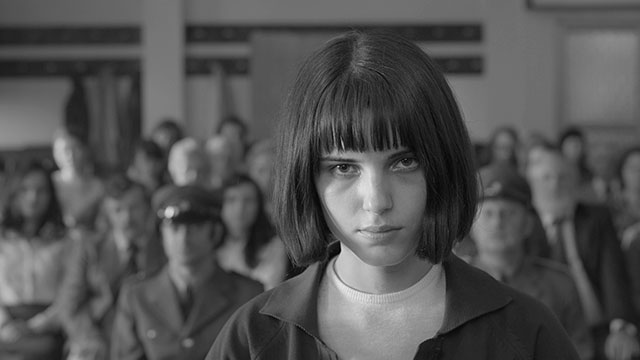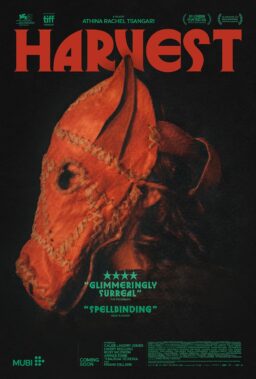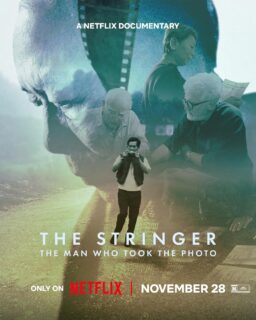Celebrating its 20th year, the Fantasia International
Film Festival has become Montreal’s largest and most important film festival.
In the face of the cadaverous World Film Festival and the comfortably
established Festival du Nouveau Cinema, Fantasia has only recently come of age,
ranking among the most important fantastic film festivals in the world. It’s
where horror hopefuls from Hollywood test their new material, and where the
newest, most daring genre talents are discovered. While the lineup at
Fantasia rarely features in the year-end awards circuit, this can only be seen
as an asset with a curation that consistently seeks to push up against the
status quo. Supported by the government, with a growing list of sponsors and
high-profile guests, the festival still manages to uphold its punk mentality—for
now at least, successfully juggling its newer establishment ties with a
celebration of freakdom.
Fantasia serves as a mirror of a cross section of Montreal,
the downtown core that is constantly in motion. For years now the festival has
been headquartered at the Concordia University campus, with most screenings
taking place at two university-owned venues. Among the city’s more English
areas, most of the residents of this area of the city are students. While it
doesn’t host nearly as many international students as McGill (which is just
down the street, hardly a ten-minute walk), it seems to be a revolving door of
young people from across Canada and the world. It reflects a certain spirit of
the city that seems bustling and full of life, but behind that façade lies
endless construction and a sort of aching restlessness that is not quite
apparent until you call Montreal home. Fantasia seems to face that reality head
on, putting up a mirror to its audience, reflecting back the lonely dread of
perpetual motion back at them.
Among the strongest programming in recent memory, this
year’s edition of Fantasia seemed unusually focused on isolation; the strongest
films in the sprawling lineup hinged on the impenetrable solitude of modern
life. An idea as old as cinema itself, in the hands of some of the most
innovative artists of genre, this theme takes on new and horrific implications.
Running as part of a profile on Polish cinema (in homage to
the late, great master of Polish cinema Andrzej Żuławski), featuring recent
festival favorites such as “Demon” and “The Lure,” “I, Olga Hepnarová” (pictured above) stands out among Fantasia’s most bleak outputs.
A reflection of the festival’s diversity, the film occupies ground in arthouse
and true-crime, adapting the story of Olga Hepnarová, a 22-year-old woman who
drove her truck into a crowd of innocent people in Prague, 1973. In stark black
and white, with an aching pace that emphasizes with every beat the dull tone of
existence, a painful portrait of increased alienation slowly emerges. Olga
(Michalina Olszanska, one-half of the mermaid duo from “The Lure”) can’t seem
to fit in, and beyond that, is routinely beaten down psychologically by
society.
As characters comment on her smell and her lack of social
queues, Olga puts up more and more walls.
Non-verbal and increasingly alone, we feel her growing alienating as she
shivers through long winter nights and in her ravenous but empty sexual hunger.
Starved for intimacy, she becomes increasingly withdrawn as even her friends
begin to push her away. Days, weeks and years blend into one endless night. At
a certain point, she decides she can’t take it anymore, driving her pain
through an innocent crowd.
Echoing rather uncomfortably the recent events in Nice, the film
emphasizes with Olga’s desperation. It doesn’t revel in her violence but tries
to make sense of it amidst her slow mental deterioration. The scene of her
rampage plays out unromantically, in what feels like a sustained shot of bodies
ramming up against a large lumbering van, seen from the perspective of the
passenger seat. Seating us with Olga forces culpability onto the audience,
bringing attention to Olga’s later pleas that her mass murder was an indictment
on a society that preys on the weak and eats its young. The film, and the last
act, in particular, starting with the murder, accuse a populace that would
rather hang the outsider than face its own moral failures.

Society’s failure to protect its most vulnerable members
finds its way in many other films. In the animated “Seoul Station,” a zombie-like virus is spread through the homeless
population of Seoul, Korea. Turned down by hospitals, and neglected by the
police, an increasingly large infected population takes over the metropolitan
city. Rather than face the truth of an epidemic, the police force believes the
homeless people are revolting and choose to shoot them down rather than face
the much greater threat of a pandemic. The film works as a sort of prequel to
“Train to Busan,” which also screened at Fantasia as well as select American
theatres. Both films take place during the same epidemic, using a zombie
outbreak to deconstruct class inequality and the ramifications of valuing
individualistic motives over the collective. Both films suggest through its
disenfranchised characters and a deep-seated alienation that the zombie metaphor is an
apt, threatening reminder of those society leaves behind.
Urban angst and isolation lies at the heart of two films
from Japan, and easily among the festival’s best entries. Brian Tallerico has already gone in depth as to why Kurosawa has returned to form with “Creepy,” the unsettling tale of serial
killers and impostors in the technological age. While the film loses some of
its momentum in the third act, it nonetheless paints a horrific tale of dread
and despair. The film draws on our discomfort in breaking social mores as a
source of unsettling horror. In the movie, our willingness to be compliant with
authority is the ultimate source
of anxiety, as characters willingly allow themselves to be manipulated through
misplaced trust in hierarchical systems. Much like Kurosawa’s previous titles, “Creepy”
gets under your skin and forces the audience to reflect on their own failures
and weaknesses.

“Creepy” may have been the most frightening Japanese film of
the festival if it were not for “Kiyamachi
Daruma,” a bizarre and horrifying Yakuza film. Perhaps the biggest
discovery of this edition of Fantasia, Daruma has a true air of ugliness. Shot
on low-fi digital, the film has very little fanfare and almost no press. It was
not a premeditated watch, but an impulsive gamble to fill time between two
other screenings. The film opens with a Yakuza debt collector asking for a
client to pay up. When they fail to, he returns to his car and lifts from the
back seat a limbless man. Dropping the man onto the floor before them, he
insists they must care for the Daruma (a reference to a Japanese doll) until
they can pay up. The scene is just beginning, though, as Shigeru Katsuura
taunts the family by shitting himself, peeing on the floor and crawling up to
their teen daughter and settling himself between her thighs.
Setting the scene for an incredibly gonzo film about the
nature of loyalty, we soon come to learn that Katsuura was once the leader of
the Yakuza gang, and an error in judgement left him with no arms or legs.
Incredibly violent and horrifically grotesque, a dark portrait of the
underworld is unveiled with no romanticism. As other members of the gang
orchestrate disability fraud by crippling clients that cannot pay up, others
enslave teen girls to help pay off their father’s debts. Unlike the insincere
title cards that warmed 1930s audiences that crime doesn’t pay, this film lays
that all out on the screen, specifically laying out a broken society where the
children are forced to pay for their parent’s crimes.
Katsuura (Kenichi Endō), in a self-orchestrated purgatory,
emerges as a figure of incredible dignity. Endō gives one of the best
performances of the year, slowly peeling back the layers of a lonely and
tortured man. Unable to care for himself and stripped of his power, he cannot
escape his life of crime. His only companion, his debt collecting caretaker,
only grows more disdain for him as the months and days pass. Regarding his
crippled condition as sort of restitution for his previous crimes, he tries to
right his wrongs in the face of the world that sees him as a monster.

Among the festivals other highlights: From Poland, “The Lure” glistens with sensuality and
fairy tale melancholy and has rightfully been called among the year’s best by
many before me. From Mexico, “We Are the
Flesh” offers a dystopic and transgressive view of solitude, where death is
uncertain and taboos are meant to be challenged. Comparable to Gaspar Noé, the
film takes place in an abandoned factory where two homeless siblings come face
to face with a devil man, who forces them to build a giant womb out of
cardboard. “She’s Allergic to Cats”
is sincerely bizarre but still somehow heartfelt romance about a video artist
in Hollywood who works by day as a dog groomer. For a nice change of pace, from
South Korea, “Familyhood” is a
bubblegum colored comedy-melodrama about an aging actress who secretly takes
in a pregnant teen as a surrogate mother, which manages to be both funny and
tear-jerking.
As Fantasia packs up its three-month schedule with a
screening of Zuławski’s “On the Silver
Globe,” Montreal returns to itself. Writing about a festival that takes
place in your hometown doesn’t have the cushion of travel to transition back to
routine and Fantasia has a way of turning normal life upside down. In its
upheaval of Montreal every summer, it forges ties to a local and international
community of genre fans, building its own canon of transgression. Fantasia
feels like Montreal’s own festival, one that sets its own path and reflects a
multiplicity of voices and influences. Few festivals are able to pack as much
cinema into its schedule, and even less with such startling consistency of dissent.
Fantasia’s greatest asset lies in a programming team that caters to and
challenges its loyal audience, offering the best genre cinema from around the
world, with a comfortable serving of new voices.












